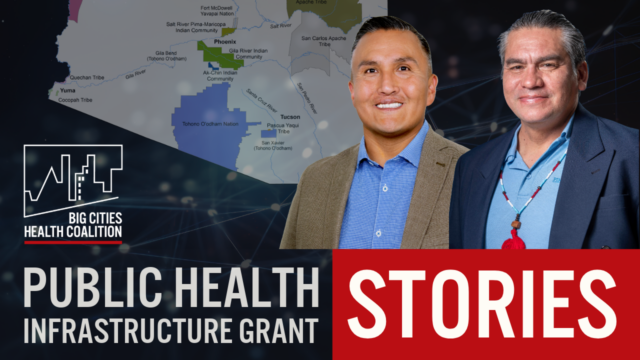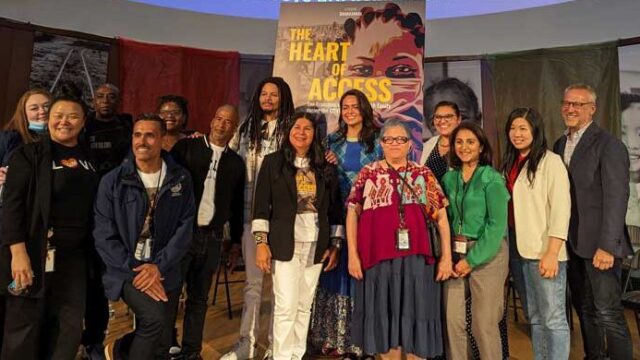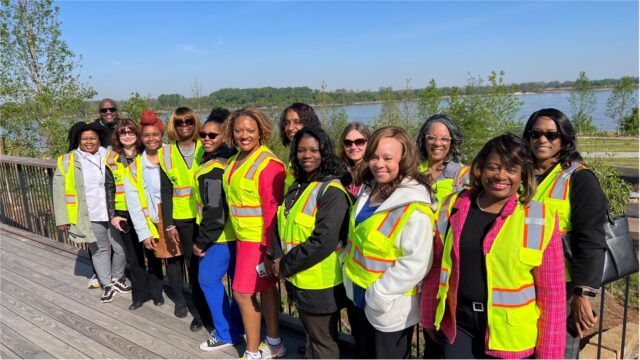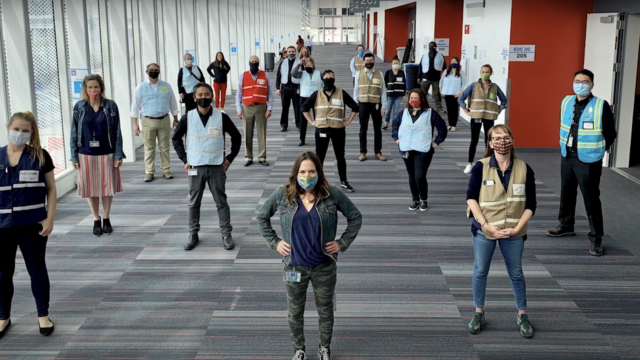Frontline Blog
Urban health departments in AZ establish first-ever tribal liaisons
May 2024

The state’s two largest urban health departments have dedicated public health infrastructure funding to building stronger relationships with area tribal nations.
For many reasons, the vast majority of Native Americans – estimates range from 70–80 percent – live in cities, and Arizona’s largest urban centers are home to hundreds of thousands of Native Americans. Recognizing this, and the fact that Native Americans across the board experience some of the highest health disparities, the local public health departments in both Pima County (Tucson) and Maricopa County (Phoenix) have created Tribal Liaison positions to serve both the urban and rural populations within their counties.
They are two of just a handful of local health departments in the U.S. who have such dedicated positions charged with strengthening intergovernmental relationships to improve health equity.
How does a tribe think about their own data sovereignty, especially when other infrastructure needs such as unpaved roads or broadband access become prevailing necessities?
Ryan Martin, Tribal Liaison, Maricopa County Department of Public Health
The positions were made possible through Public Health Infrastructure Grants from the Centers of Disease Control and Prevention (CDC). The funding allows 107 local, state, and territorial health department recipients across the country to develop their infrastructure and workforce in innovative ways that are not disease-specific and that have been sorely needed.
These grants have allowed the Pima County Health Department and Maricopa County Department of Public Health, for example, to hire dedicated staff to serve as liaisons between the local health departments and the areas’ tribes. Both health departments have the opportunity to set precedents for effectively bringing tribal representatives to the table and strengthening equal-partner relationships.
In October 2023, the Pima County Health Department (PCHD) brought Marcelino Flores on board as the state’s first-ever Tribal Liaison at a local health department. Flores brings many years of experience in community, economic, and workforce development, and is also a member of the Pascua Yaqui Tribe. One of Flores’ first tasks in his role with PCHD is extending collaborative relationships between PCHD and the Pascua Yaqui Tribe, Tohono O’odham Nation, and Tucson Indian Center. An initial area of collaboration is a focus on understanding and integrating data sovereignty in public health, which is key to measuring change in health equity and is ultimately at the heart of public health work.
To get to the root causes of some of the health disparities that Native Americans experience, Flores is working with trusted leaders of Pima County’s indigenous communities to establish focus areas, including improving access to care and addressing social determinants of health, such as housing, economic stability, and the natural environment. Using guidance from the National Academy of Science Report on Federal Policy to Advance Racial, Ethnic, and Tribal Health Equity 2023, Flores is building on existing partnerships to leverage resources that led to a successful collaboration with tribal communities to conduct several National Public Health Week activities.
“Health disparities exist, and there is a real opportunity to better serve our shared community,” he says. “With the positive, visible, progress we build trust and work towards future collaborations with great hope, encouraged by what we can do together.”
Ryan Martin, who is Navajo and grew up in Bloomfield, New Mexico, became Tribal Liaison at Maricopa County Department of Public Health in January 2024. He also sees the value in focusing on a few core areas of need for tribal communities. Martin has homed in on four key areas that are of the highest importance to Native Americans in his county: homelessness, substance use, heat-related injury, and chronic disease. An early win came when he turned his epidemiology colleagues’ attention to the fact that Native Americans had the highest proportion of heat-related deaths in Maricopa County over the past three years.
As with other health department staff who focus on equity issues, the tribal liaisons work to improve trust, increase effective communication, establish culturally competent services, and lead strategies to address the root causes of structural inequities. But Flores and Martin have a unique charge which is critical: helping to negotiate sovereignty issues, such as determining who should collect, analyze, report, and act with local Native American health data. Each tribal nation has the right to govern, in their own distinct way, the collection, ownership, and use of their data. While the associated agreements are in many cases long established, particularly at the national level, Martin points out that in practice, tribes are often challenged by limited infrastructure to truly assert their sovereignty over their own health data.
“The Navajo Nation has an epidemiology department, for example, but most tribes don’t,” says Martin. “How, then, does a tribe think about their own data sovereignty, especially when other infrastructure needs such as unpaved roads or broadband access become prevailing necessities?” This situation provides an opportunity for a two-way connection between local tribes and public health department staff where both entities can learn and teach culturally responsive ethics around data.
Both Flores and Martin believe their public health department colleagues and their Native American neighbors have a great deal to learn from each other in a non-extractive manner. “My people have always been strategic planners,” says Martin. “My grandmother would seasonally plan as she didn’t have a refrigerator. She spent the whole year preparing for winter, which seasonally meant certain practices would have to happen for a successful harvest from her farm and livestock. The sustenance products would largely be food for the winter, dried meat, and vegetables. Improper planning and work would be disastrous. These practices instilled important values for her children in application for their lives today.”
Similarly, Flores notes that tribal communities have approaches to sustainable living that can help to mitigate climate change. At the same time, he wants to give local tribes more information about how the health department works so they can better benefit from its services and information.
The work to bring local public health departments and Native American nations into fuller coordination around public health will require a great deal of ongoing relationship building and mutual education. An ongoing commitment from Congress and CDC will ensure that local health departments can continue to support this critical health infrastructure.



